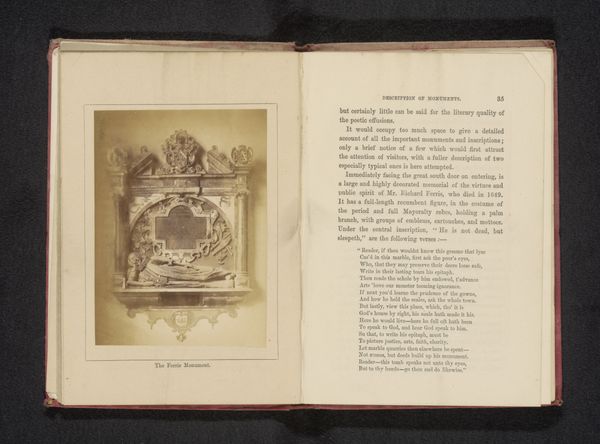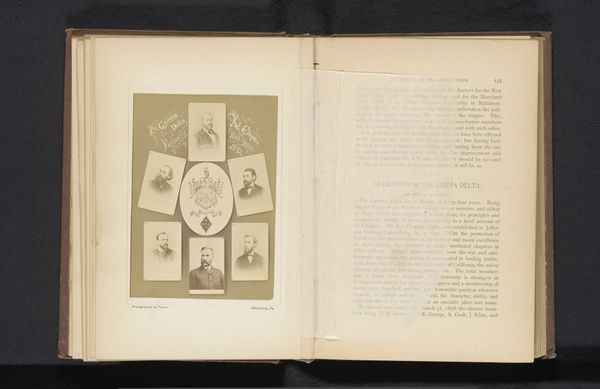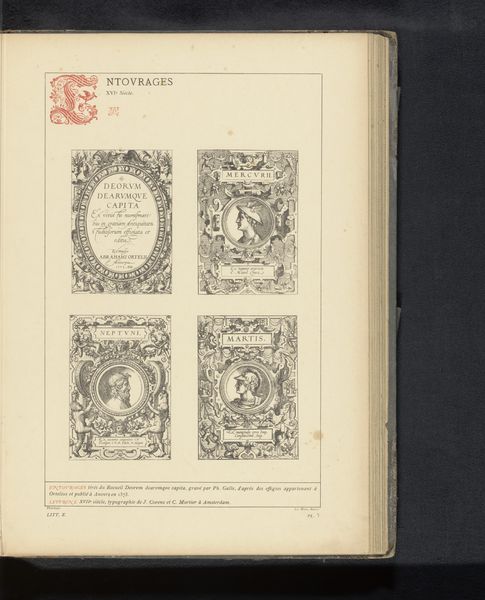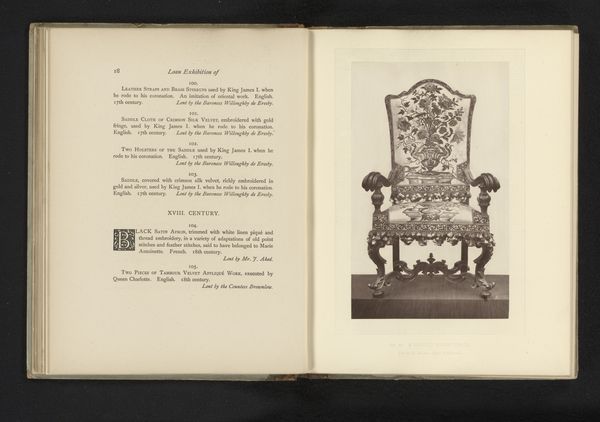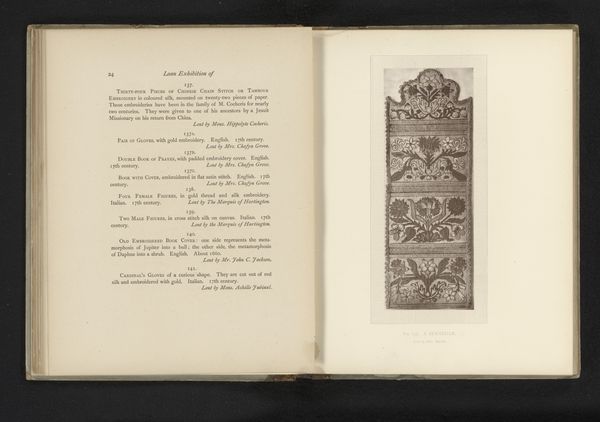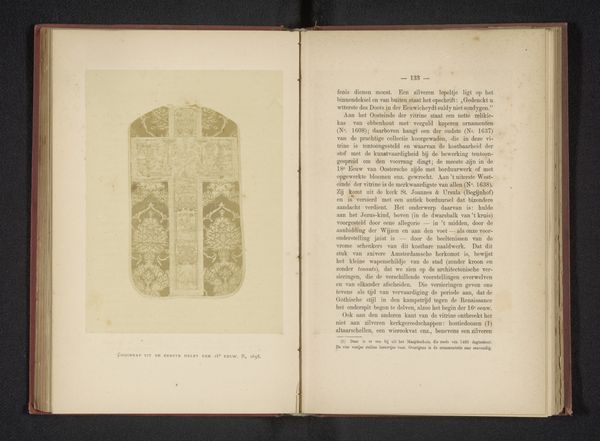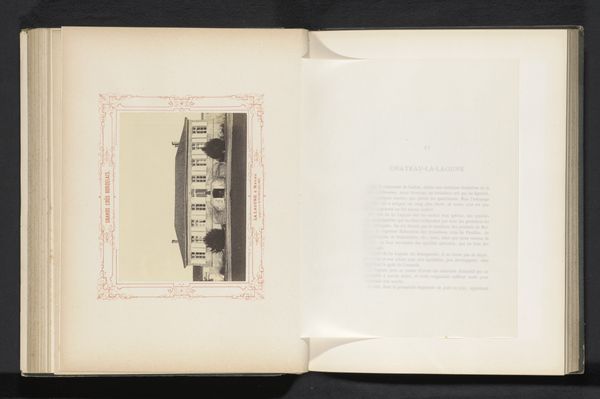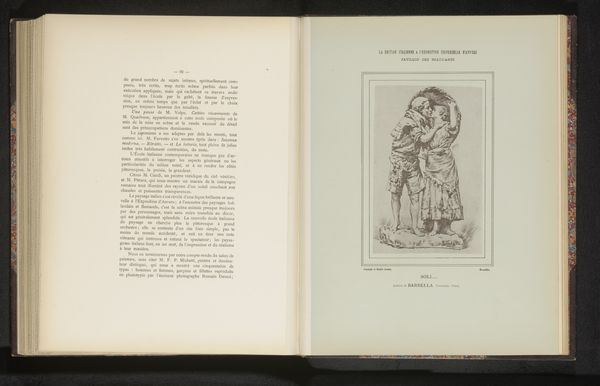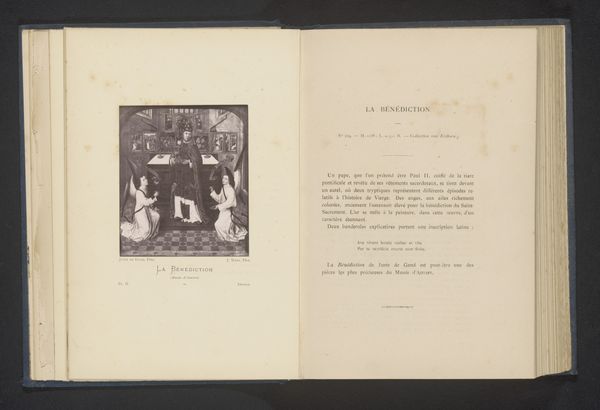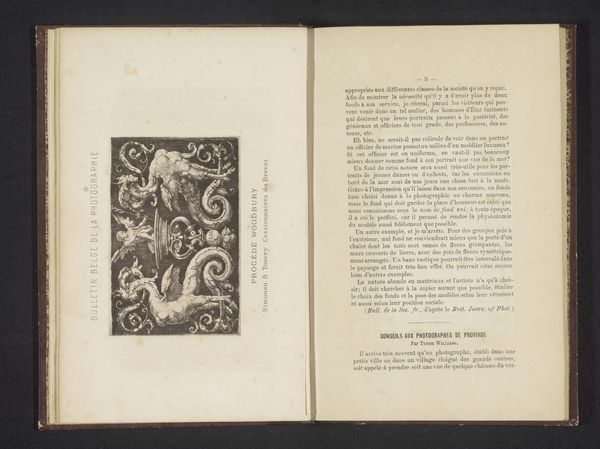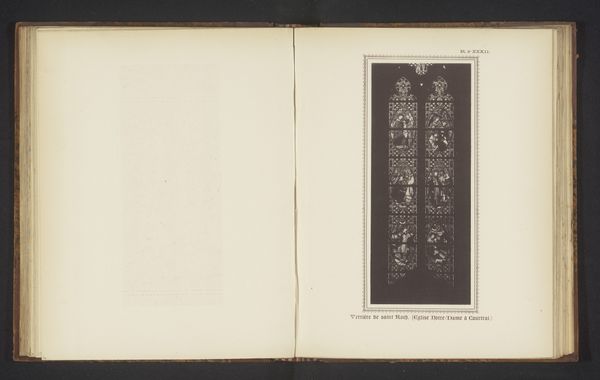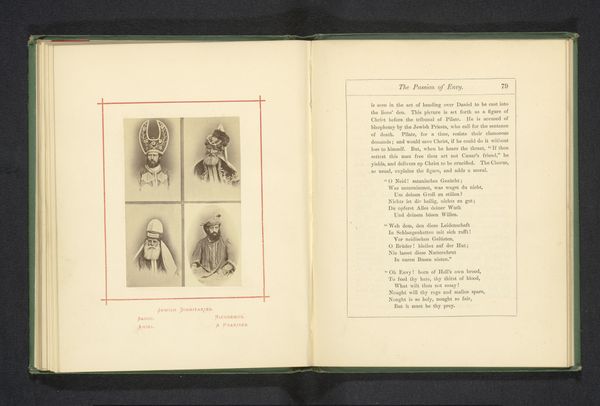
print, photography
#
portrait
# print
#
photography
Dimensions: height 90 mm, width 64 mm
Copyright: Rijks Museum: Open Domain
Curator: Here we have a striking composite print. It's titled "Compositie van vijf foto's van Franse artiesten," which translates to "Composition of Five Photographs of French Artists," dating from about 1872 to 1882. Editor: My immediate impression is that it feels like a Victorian theater bill. There's something very formal and posed about those photographic portraits. The monochrome and their arrangement convey a serious almost melancholy air. Curator: I agree. Looking closely, one sees it's constructed from a combination of printed text and photographic portraiture, so the interplay of these materials really draws attention to the mode of production—mass production versus unique photographic images. Consider the labor involved in typesetting that text alongside the then still novel process of photographic reproduction. Editor: Yes, the visual language is definitely coded, almost theatrical. The oval portraits evoke classical cameos. The frames around the individual photographs seem to offer a commentary on each actor’s role—their character both on and off stage and hinting at the personality they cultivated for public consumption. Note, too, the angels at the very top, as if placing the subjects in the firmament. Curator: That’s fascinating, because I'm thinking about the economic aspect, the distribution of images in printed form to promote and brand these performers. There are elements of celebrity and early marketing strategies. The consumption of photographic prints enabled audiences to forge a new connection with the stars. Editor: Absolutely, it represents a shift in cultural memory, where photographs act as powerful mnemonic devices. Think of it: faces fixed in time. The composition celebrates not just the individuals but also the enduring nature of their artistry, solidifying their cultural footprint. Curator: The layering of media—photography reproduced within a print—is so crucial here. It underscores the shift to a technologically advanced society shaping how information, art, and even celebrity were crafted and shared. It allows us to investigate questions around commodification and access. Editor: Thinking about those portraits arranged almost like playing cards reveals the way images crystallize cultural narratives over time. This work whispers secrets about performance, memory, and the eternal desire to fix fleeting moments in a permanent form. Curator: I've learned today that considering art in terms of both its materials and its iconography leads to more compelling insight! Editor: Indeed, by looking at these pieces closely we begin to understand better the symbiosis between symbolism and physical matter.
Comments
No comments
Be the first to comment and join the conversation on the ultimate creative platform.
